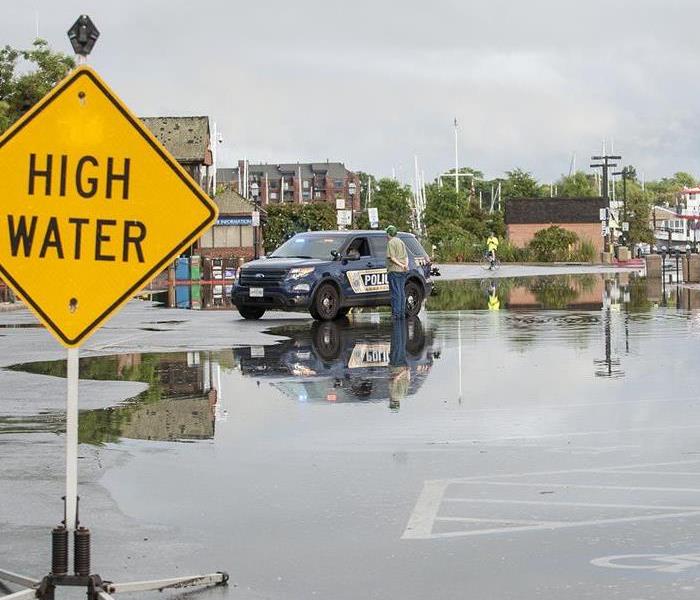Are you Prepared for a Flash Flood?
8/21/2018 (Permalink)
While Summer is an exciting time of year, Summer storms can create flood conditions faster than you may realize. Knowing the difference between a flood warning and flood watch is important. A Flash Flood Watch means there is possible flooding in Anne Arundel County. A Flash Flood Warning means flooding is already occurring or will occur soon in the county.
Preparing Your Family for a Flood
Your family will be better prepared to withstand a flood if you have the following items available, packed and ready to go in case you need to evacuate your home.
3 day supply of water, 1 gallon per person per day 3 day supply of non-perishable food items Flashlights, extra batteries and multi-purpose tools A first aid kit and a extra medications “ Sanitation and person hygiene items Extra pet supplies, food, ID and vet records. Extra clothing, blankets, sturdy shoes and rain gear Sunscreen and bug repellent - Emergency contact information and copies of important person documents. A camera to take photos of flood damage. Extra charges for electronic devices.
Annapolis Red Cross Emergency Number - (410) 952-8940
Baltimore Gas and Electric – 1-800-685-0123
SERVPRO Edgewater/Deale-Churchton/Lothian – (410) 867-3590
Storm Damage Cleanup and Restoration: What to do after a Flood or Water Damage
Floods and water damage often occur with little warning and can be devastating to homes, business and entire communities. Taking immediate action after a disaster is vital. Communicating with your insurance company and calling upon the emergency response restoration experts at SERVPRO Edgewater/Deale-Churchton/Lothian will help you move forward faster. Taking pictures, collecting items, extracting water and starting the dry-out process can be helpful, but safety must come first. If your home or business is not sturdy, do not go in. Leave that to us!
What to Do After a Flood or Water Damage
- Remove excess water by mopping and blotting.
- Wipe excess water from wood furniture after removal of lamps and tabletop items.
- Remove and prop wet upholstery and cushions.
- Place aluminum foil or wood blocks between furniture legs and wet carpeting.
- Turn air conditioning on for maximum drying in summer.
- Remove colored rugs from wet carpeting.
- Remove art objects to a safe, dry place.
- Gather loose items from floors.
What NOT to Do After a Flood or Water Damage
- Don't leave wet fabrics in place. Hang furs and leather goods.
- Don't leave books, magazines or other colored items on wet carpet or floors.
- Don't use your household vacuum to remove water.
- Don't use television or other household appliances.
- Don't turn on ceiling fixtures if ceiling is wet, and keep out of rooms where ceilings are sagging.






 24/7 Emergency Service
24/7 Emergency Service